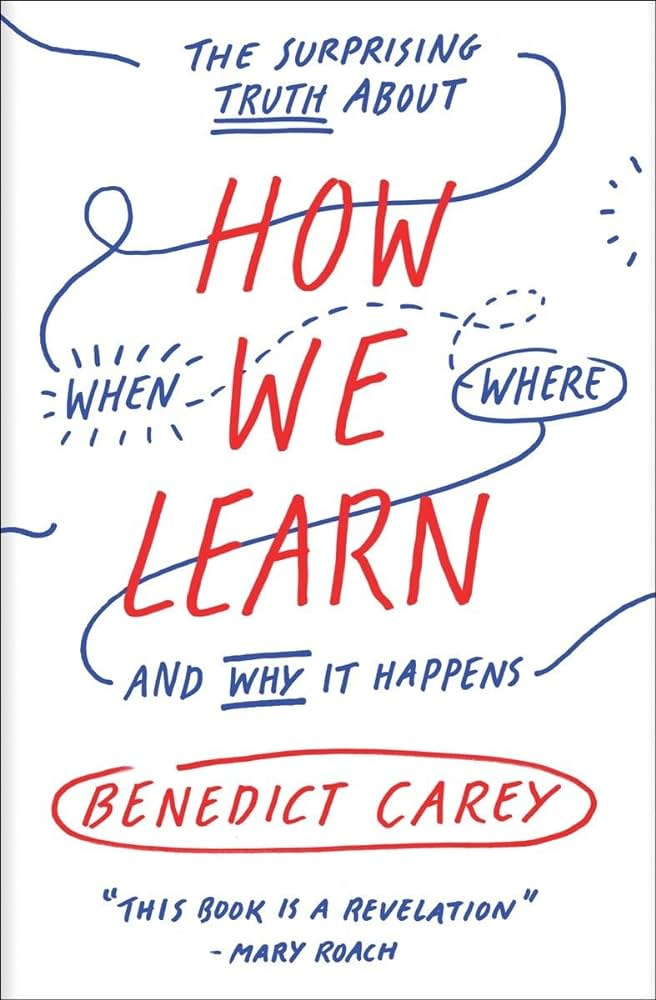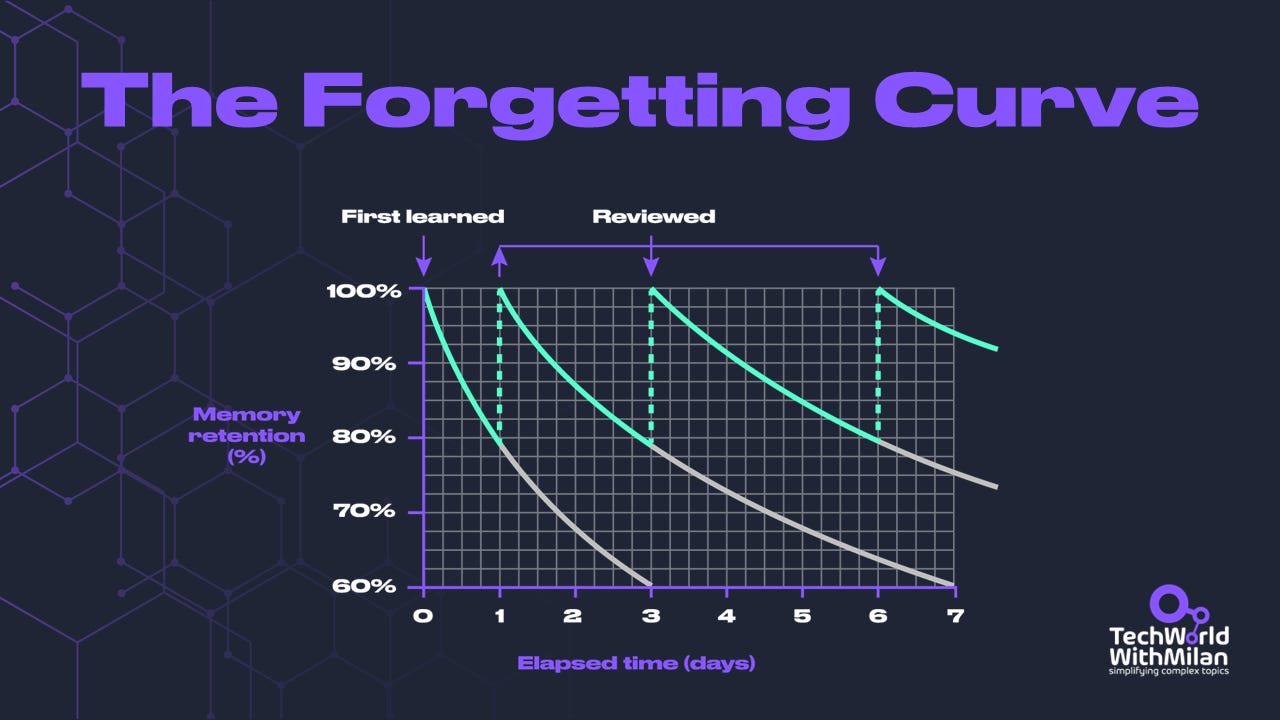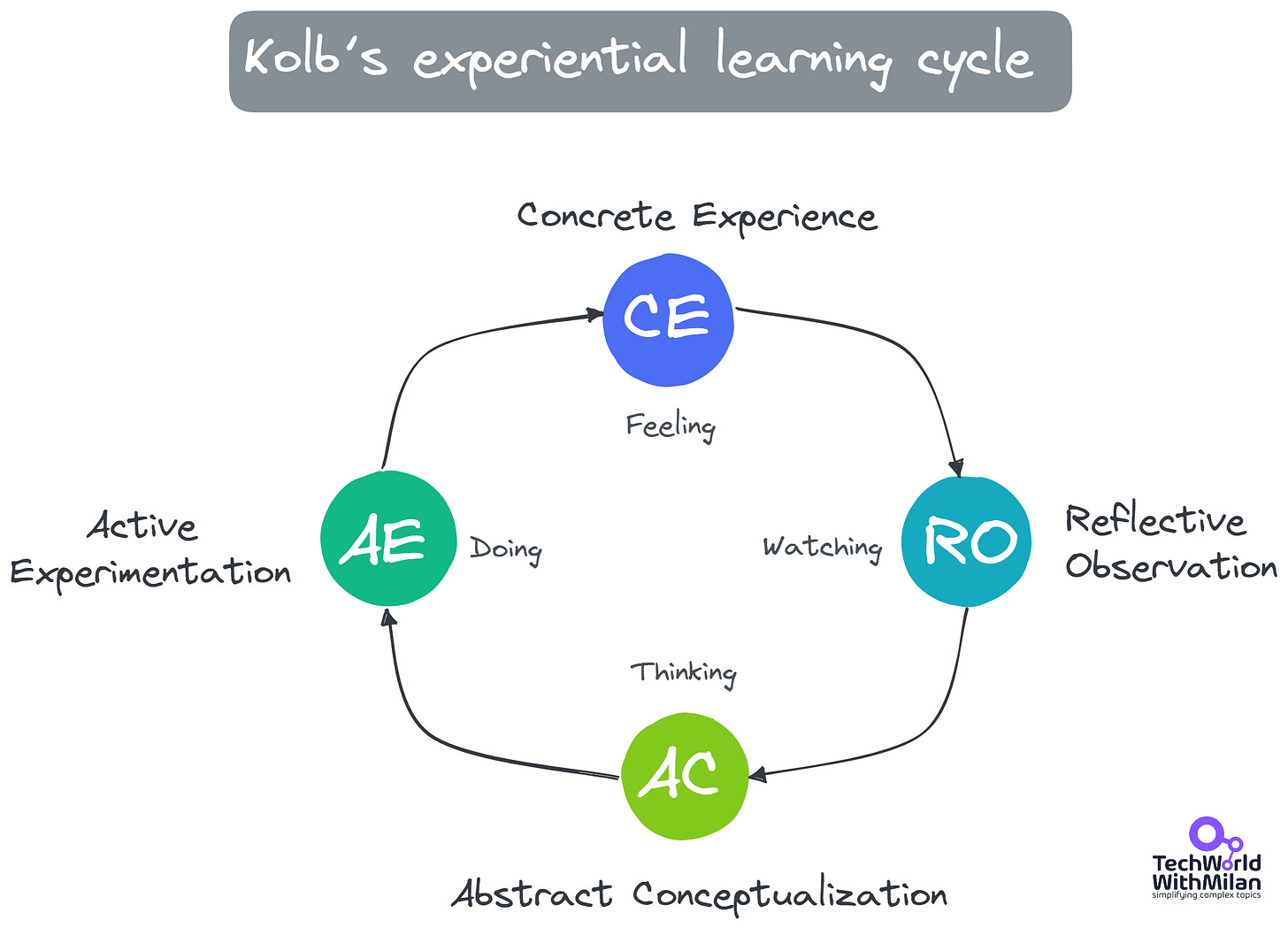How to learn anything efficiently
And retain it for good.
This week’s issue brings to you the following:
How to Deeply Understand Things
How to Retain Everything You Learn
How to Learn Anything in 20 Hours
Learning new things according to Kolb's Experiential Learning Theory
Remembering what you read with note-taking
So, let’s dive in.
How to deeply understand things
I always liked to learn new things, but at one point, I was terrible at this. Even though I was very persistent and spent many hours learning some topics, the results could have been more robust. After some ups and downs, I realized that I first needed to learn how to learn before doing anything else. Here, I will present one framework I have used many times to understand complex things that we have a lot of in software engineering.
This technique is called the Feynman Technique. It is a powerful learning tool that helps you better understand complex topics. The method is named after Nobel Prize-winning physicist Richard Feynman, who developed it to understand complex scientific theories. The idea behind the technique is simple: explain concepts in simple language as if you were explaining them to a child.
Here is the 4-step learning technique to learn complex topics:
Choose and study a concept.
First, write down the concept or topic you want to learn in one sentence. For example, if you learn more about front-end development, you can choose Web Forms 2.0, CSS Flexbox, or whatever. Then, write down everything you know about the subject you want to understand.Teach it to someone in your own words.
The Learning Pyramid shows the effectiveness of various learning activities. The trick here is to transform a low-retention activity, such as reading, to a high-retention one that sticks, such as teaching, because the assignment needs to be understood.Pick up a pen and paper and start writing about it like you’re explaining it to someone else. Aim to keep your language simple, clear, and concise so that a 5th grader can understand it. Be sure to include examples and visual demonstrations if possible.
Return to learning if you get stuck.
Identify any gaps in your understanding. Once you’ve finished writing, read through your report and make edits if necessary. Read it aloud as though to a young person. If the explanation isn't clear or sounds complicated, that's a good sign that you must think about and improve it. Review the portions of the original text you don’t grasp by returning to it.Explain and review
You've already made significant progress in your comprehension of the desired skill. You still need to finish. It would be best if you made the content simpler. This process is quite successful in helping you develop a coherent grasp of a topic. However, breaking through the noise and explaining things in a way even young toddlers with minimal vocabulary can grasp is challenging. When you try to achieve this, you are forced to understand the knowledge or talent and how all the many components work together.
How to retain everything you learn
Have you ever experienced learning something but forgetting almost everything in a few days? Then you need to reread it, but it needs to be recovered, so it isn’t enjoyable. Our brain works so that when we read/learn something, in a day, we will lose 10-30% of what we have learned, and in a week, we will lose 80%.
However, this knowledge could be kept in long-term memory. The solution is called the Spaced Repetition method. You can use it to learn anything, from your exams to new fields you want to research.
Hermann Ebbinghaus, a psychologist, was the first to study memory analysis in the late 1880s. He accomplished this by spending years remembering lists of made-up, incomprehensible phrases. Ebbinghaus could track the rate at which memories "decay" over time by documenting his results, including how many times he studied each list, the intervals between his study sessions, and how much he could keep. The Forgetting Curve, a graph he created, represented this degradation rate. Although The Forgetting Curve significantly impacted the study of memory, it is also a little deceptive. It supports the notion that memories fade with time.
Author Benedict Carey explains the “Forget to Learn” idea, a new theory of disuse, in his book "How We Learn.” This theory helps to explain why some memories seem to endure while others seem to become extinct. The first principle of this theory is that memories have two different strengths – storage strength and retrieval strength.
Storage strength - Does not deteriorate over time. Information is stored once it has been obtained, and the brain determines that it has reached a certain level of relevance. Only frequent recall or use will increase storage strength.
Retrieval strength—the ability to access memory—does fade. However, it’s fickle, not as voluminous as storage strength, and needs regular maintenance.
As a result, "forgetting" is a problem with accessibility. Although the memory is in storage, it cannot be located. According to the second tenet of the "Forget to Learn" hypothesis, learning increases when memory is revisited the more the retrieval strength has decreased.

So, how should we learn to optimize retrieval? Try the Spaced Repetition method. Here is an example of when you should repeat things:
1. First repetition: 1 day
2. Second repetition: 3 days
3. Third repetition: 7 days
4. Fourth repetition: 16 days
5. Fifth repetition: 35 days
Of course, this depends on the interval when you need to learn something so that these times could change.
👉 It is recommended to spend the first 10-20 hours learning something fast by taking on learning something new most of your time (e.g., 70-80%) and then slowing down to a smaller percentage, such as 20-30% of your time, in later repetitions.
So, how can you try the Spaced Repetition method? With old-school flashcards or apps like Anki.
An additional method that could be used with Spaced Repetition is Active Recall. Active recall is a learning strategy involving conscious retrieval of information from memory rather than merely reviewing or rereading the material.
It consists of the following steps:
It begins with exposure to the material
Followed by a review
Then, the critical step is actively recalling the information without referring to the source.
Post-recall, you verify your answers against the head, identify errors, and iterate the process until you can recall the information accurately.
This strategy is often paired with spaced repetition to enhance its effectiveness, which involves increasing the intervals between each recall session. Although more labor-intensive than a passive review, this method significantly improves long-term memory retention due to the active engagement it requires from the learner.
How to learn anything in 20 hours
We all remember that 10.000 hours rule by Malcolm Gladwell and his book “Outliers: The Story of Success,” which says you need to do something for 10.000 hours to become an expert. But, he said, “The key to achieving true experience in any skill is simply practicing, albeit correctly, for at least 10,000 hours”.
And this looks scary! Especially today with the everchanging technologies, frameworks, methodologies, etc. Some things even only exist for several hours in the market. Yet, Josh Kaufman, in his excellent TED talk called “The first 20 hours - how to learn anything”, explained that 10,000-hour rules were misunderstood for years. People usually think you must practice something for 10,000 to become an expert in that skill, but it means you should do it if you want to be in 1%.
He found that, in reality, you only need 20 hours to be reasonably good at something. So the first thing you do is find something you want to do that will motivate you. Then, you can break it into four steps:
Deconstruct the skill - try understanding the craft, its parts, concepts, and how it works together. Here, you can use First Principles. This enables you to understand which steps you need to make to succeed with it.
Start your reasoning process by considering the fundamental components you've identified. Then, analyze how each part interacts with others and contributes to the overall problem or concept. Finally, use logical reasoning to understand the relationships between the core elements and avoid relying on analogies or comparisons.
Learn enough to self-correct - when you understand the basics, start practicing and pay attention to mistakes and what you need to work on. Here, you can use The Feynman Technique.
The technique helps identify gaps in understanding, which are then addressed by reviewing and refining the explanation. By repeatedly practicing this technique, the learner gains a more profound and precise grasp of the subject matter.
Remove practice barriers - create an environment that will enable you to succeed. Try to do the 1-2-2 technique. Focus on one skill for two hours every day for two months. After this, your life path will be changed.
Put in the time—deliberate practice is the most important thing. We must focus on goals and get feedback by pushing ourselves to improve daily.
Learning new things according to Kolb's experiential learning theory
Kolb's Experiential Learning Theory is a four-stage cycle that describes how people learn from experience. Developed by psychologist David Kolb, the theory is based on the idea that our experiences serve as a basis for learning and development.
Here are the four stages of the cycle:
Concrete Experience (CE): This is the first stage, where the learner actively experiences an activity such as a lab session or fieldwork. For example, you started to learn a new programming language, such as syntax, structure, commands, etc. Then, you wrote a few simple programs and ran into a few errors you didn’t understand.
Reflective Observation (RO): After the concrete experience, the learner reflects on the occasion. This reflection can take many forms, from a simple pause to consider what happened to a more structured debriefing. For example, after writing and running your first few programs, you take a step back and reflect on the experience. You think about what went well and what didn't. You may also read other people's code comparing it to yours.
Abstract Conceptualization (AC): In this stage, the learner makes sense of what happened during the experience by considering their reflections and forming abstract concepts and generalizations. You realize that the programming language has a particular style and idioms that are different from other languages you know. You understand its unique features, like indentation for code blocks, dynamic typing, and robust data structures like lists and dictionaries.
Active Experimentation (AE): The final stage involves applying the concepts learned in the abstract conceptualization stage to new situations. This leads to new experiences, and the cycle begins anew. For example, with your newfound understanding of a new programming language, you start experimenting. First, you write more complex programs using your knowledge of the language’s unique features. Then, you try to solve more complicated problems.
According to Kolb, effective learning occurs when a person can complete all four-cycle stages. However, people may prefer different stages of the cycle, and this preference then leads to various learning styles:
Converging (AC/AE): These learners are good at applying ideas and solving problems. They prefer technical tasks and are less interested in interpersonal aspects, e.g., diving into docs and systematically learning about them.
Diverging (CE/RO): These learners are good at brainstorming and generating ideas. They have broad interests and like to gather information, such as by exploring different libraries and frameworks.
Assimilating (AC/RO): These learners are good at understanding a wide range of information and organizing it in a clear, logical format. They are more interested in abstract concepts than people. They like to read books or take courses on a programming language and a structured approach to learning.
Accommodating (CE/AE): These learners are good at implementing plans and involving themselves in new experiences. They tend to rely on others for information and prefer a practical approach. They would jump right into a project or problem as they learn a new programming language and like to do, e.g., pair programming.
The theory posits that learning is a process that involves a balance between these four modes and that the learner can start at any stage but must go through each in sequence for successful learning to occur.
Remembering what you read with note-taking
People often ask me what my superpowers are. And my answer is only one: I tend to write things down. Anything we hear or learn in a few days or months will disappear and only suffice if we don't take notes. As David Allen said, "Your mind is for having ideas, not holding them."
I take notes, a lot of notes. I used different note-taking methods over the years, and here I want to present one effective one, called the Cornell method.
The Cornell Method of note-taking was devised by Dr. Walter Pauk, an education professor at Cornell University, during the 1940s. Dr. Pauk designed this system to enable students to articulate and apply the concepts they learned efficiently.
How you can use this method:
Prepare your page. Divide a sheet of paper into three sections: a narrow left-hand column called the "Cue Column," a wider right-hand column for "Note-taking," and a small section at the bottom for a "Summary."
Engage in Note-taking. Use the Note-taking column to jot down main ideas, details, and diagrams during a lecture or reading. Aim for phrases over complete sentences to keep things brief.
Craft Cues. Post-session, glance through your notes, crafting questions or keywords relating to the material in the Cue Column. This sets the stage for active review.
Reflect. Cover the Note-taking column, using your cues to recite the material. This helps in embedding the information in your memory. Also, please take a moment to reflect on the material, relating it to what you already know.
Summarize - In the Summary section, encapsulate the critical points of the page's material in your own words. This reinforces understanding and prepares you for future reviews.
Also, remember to do periodic reviews using the Cue column, and your Summary will help reinforce the material over time.
Another promising approach for note-taking and organization is Tiago Forte’s Second Brain method.










Awesome stuff!
Few more books on the topic are:
- Superlearning by Peter Hollins
- Ultralearning by Scott Young
- The Only Skill That Matters by Jonathan Levi
Ooh man, I don't read this type of articles before! It's just boom 💥 Hats off to you man